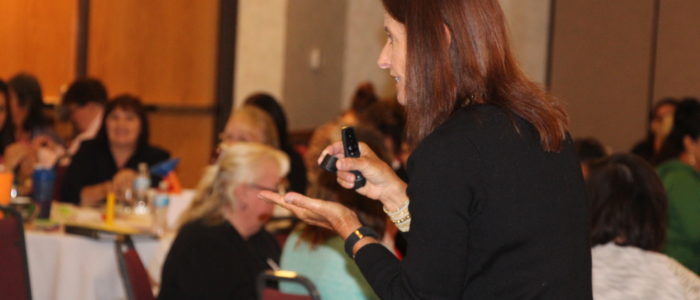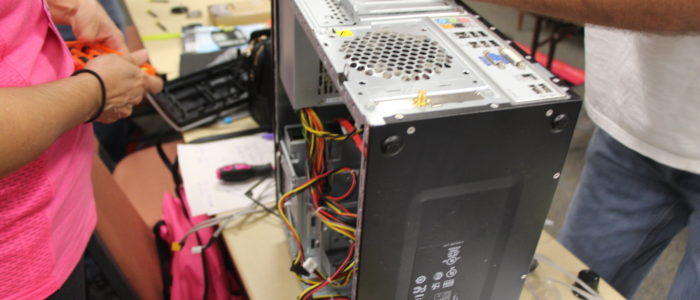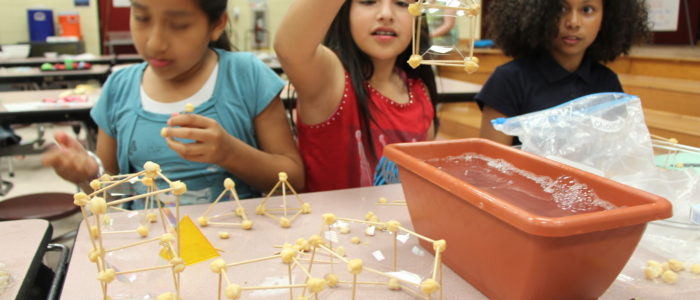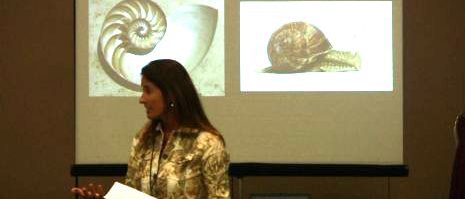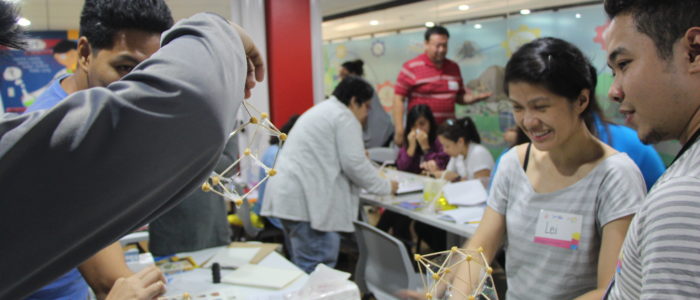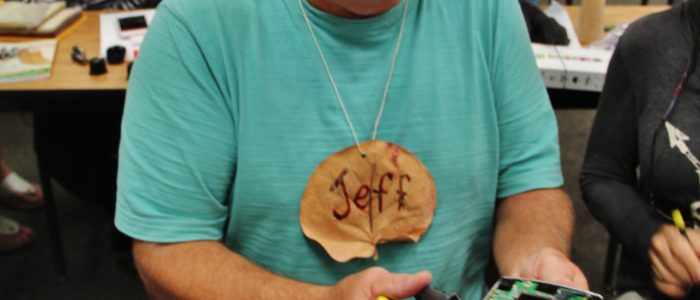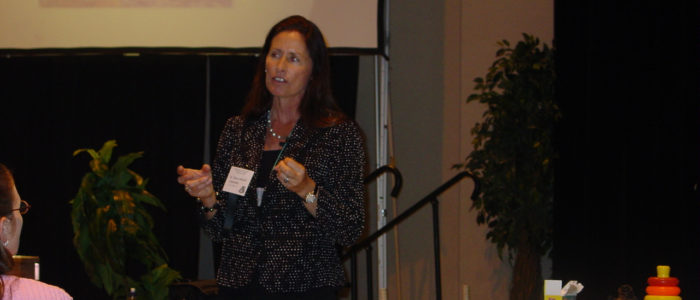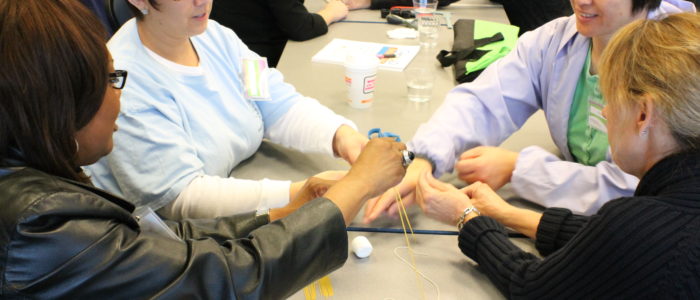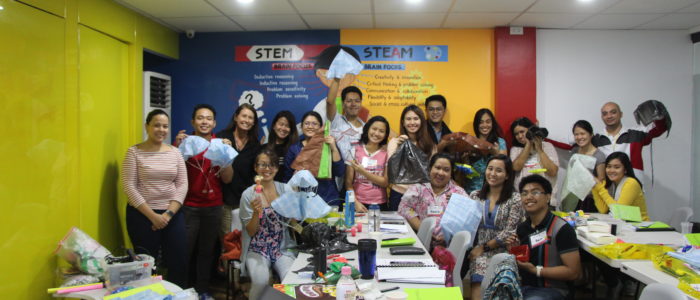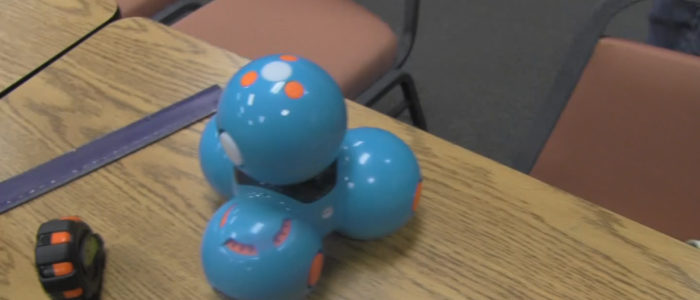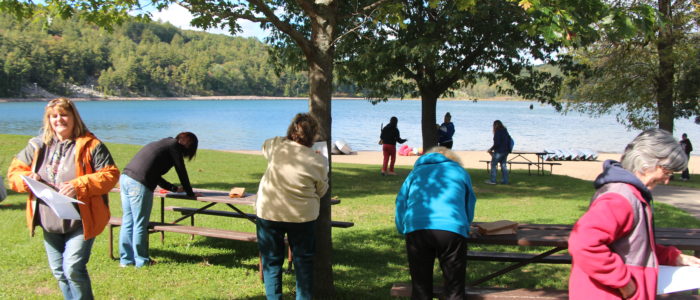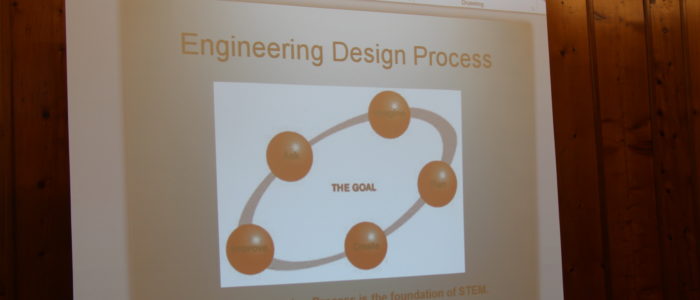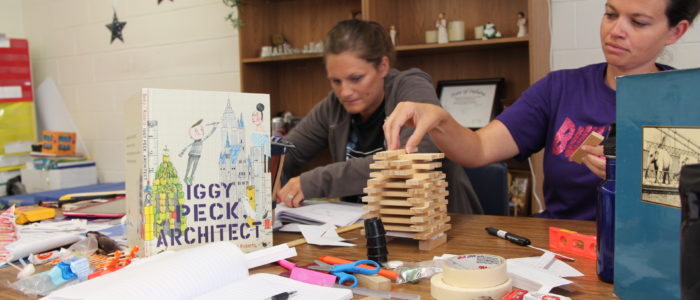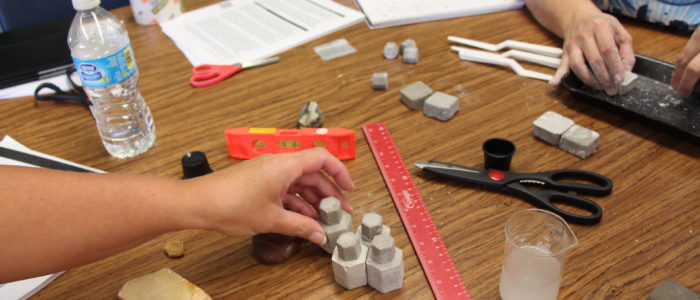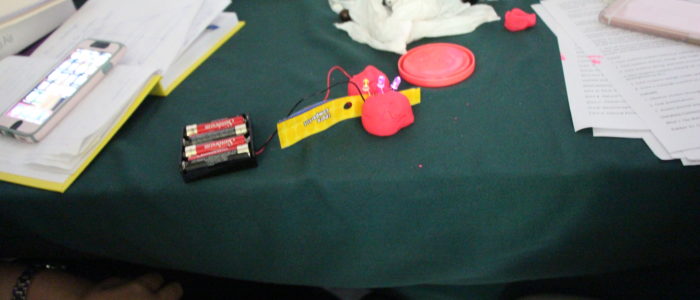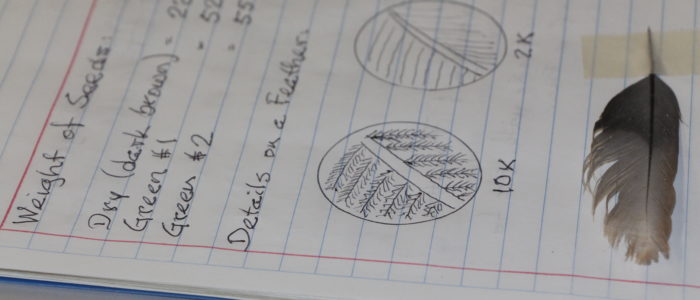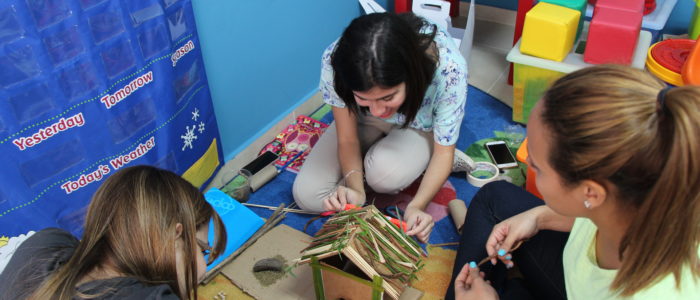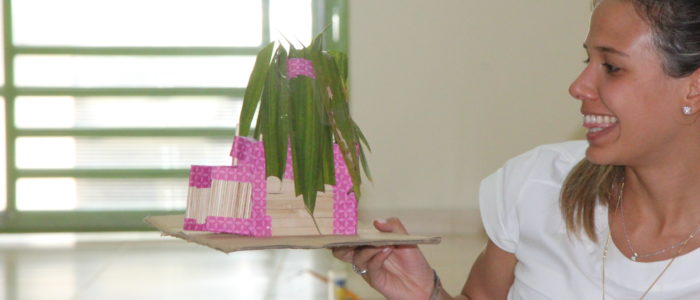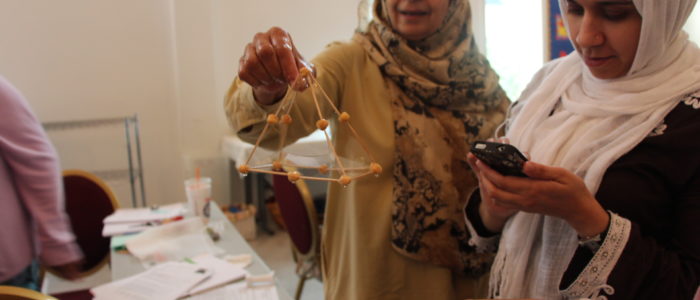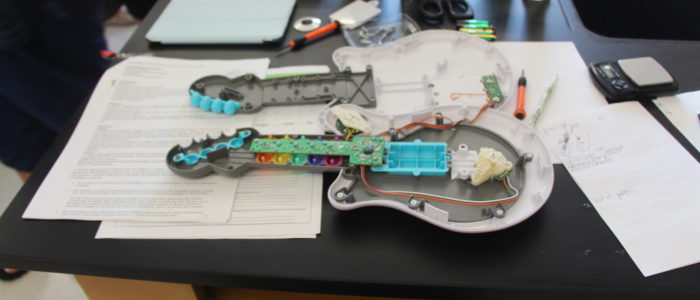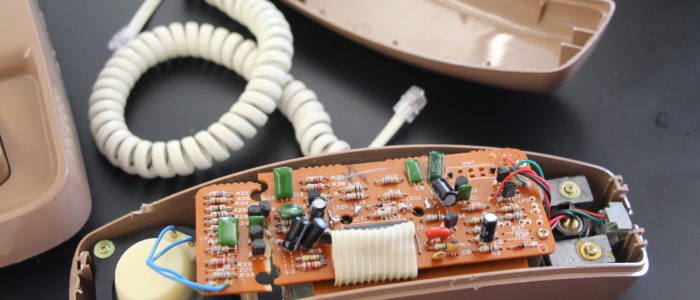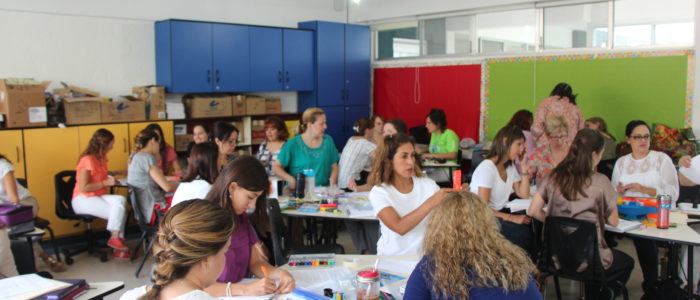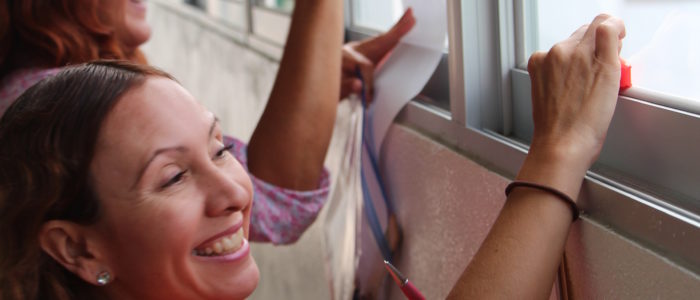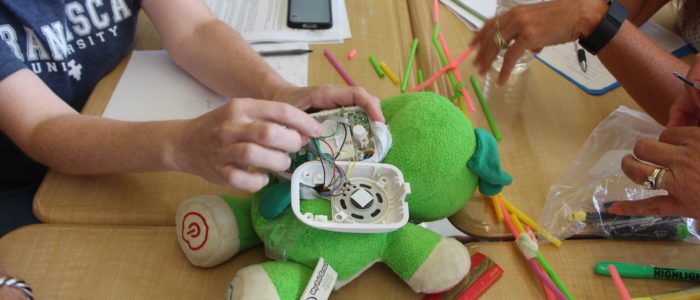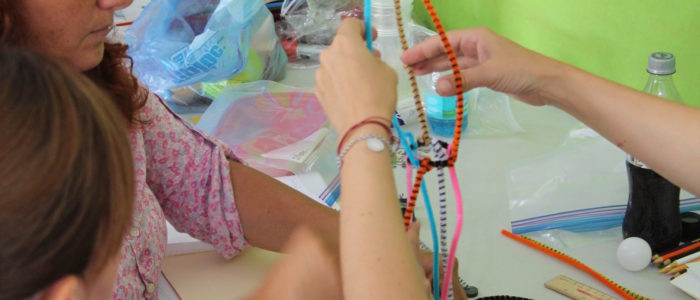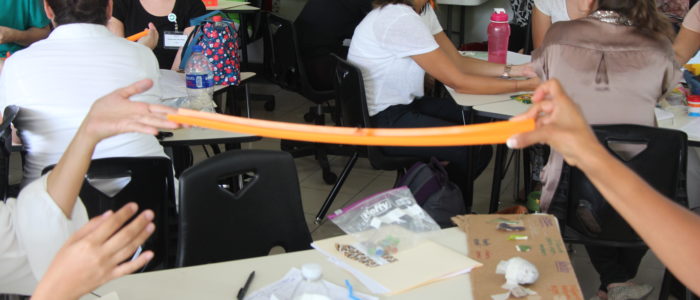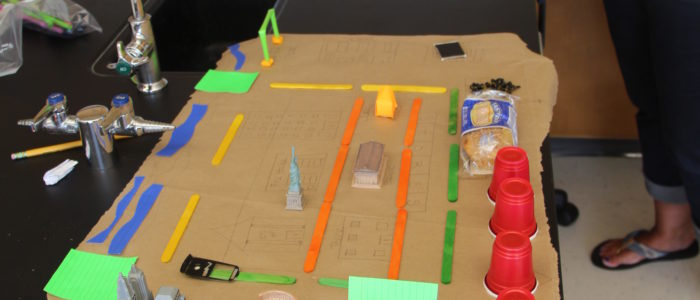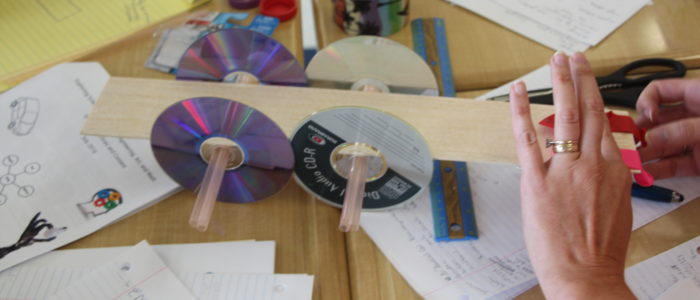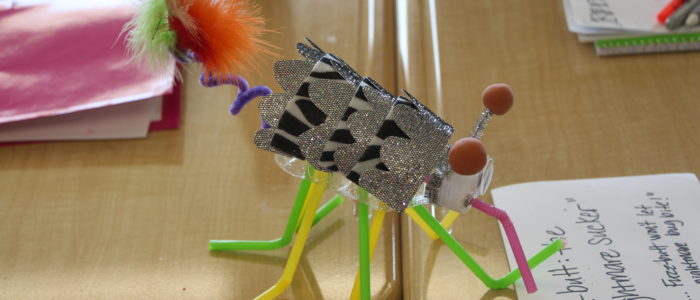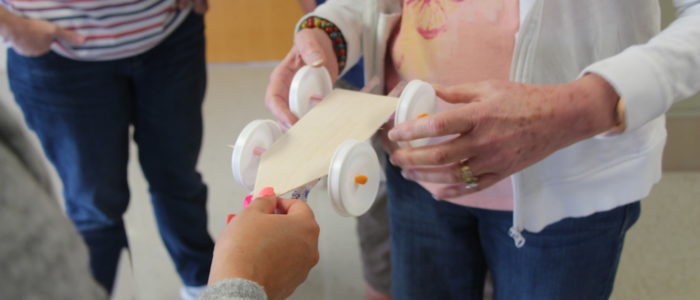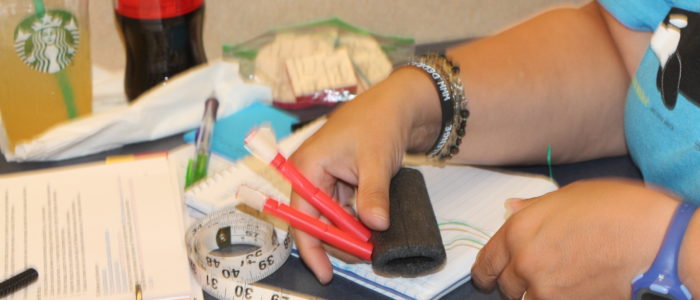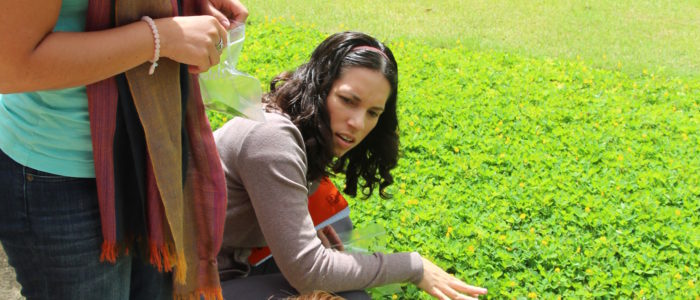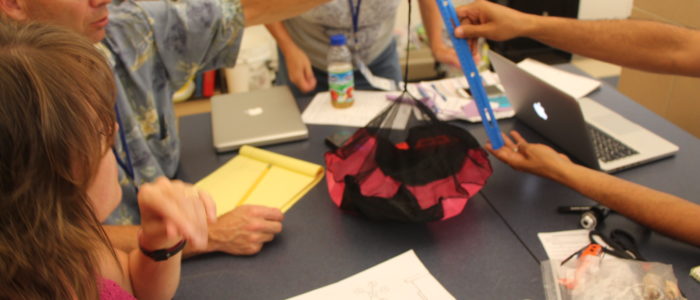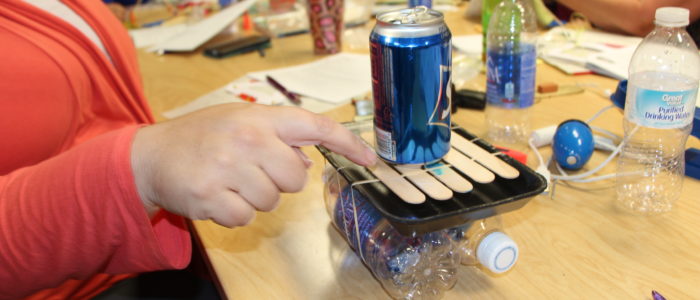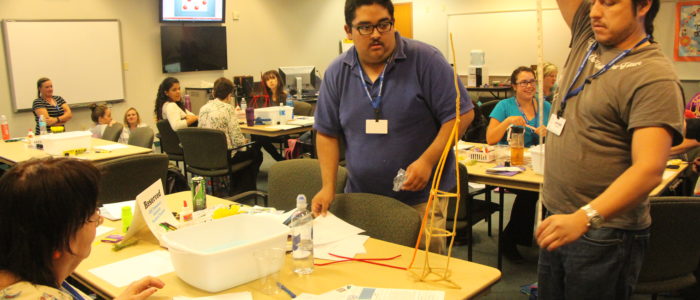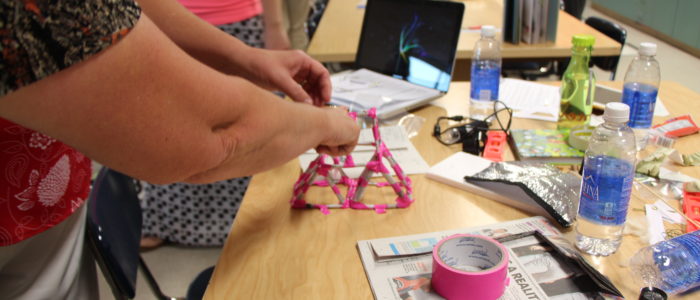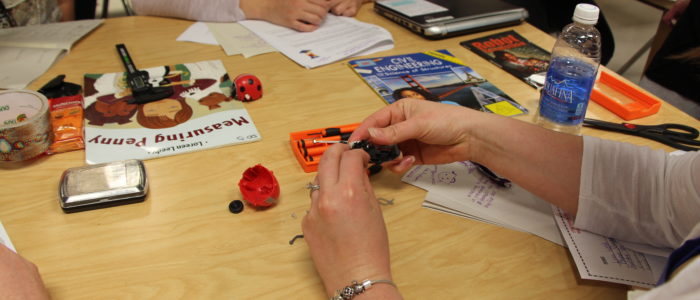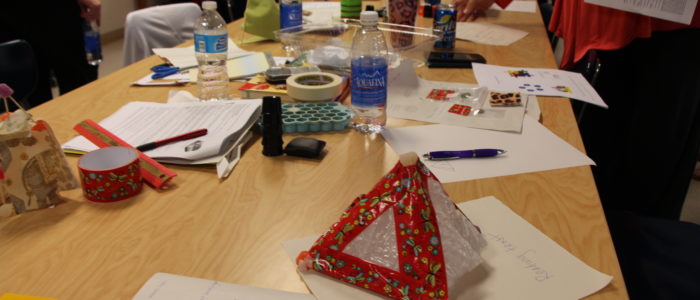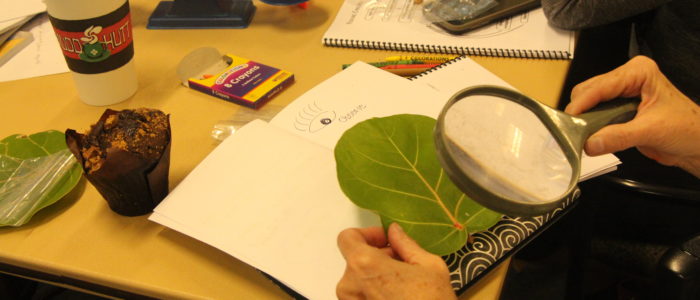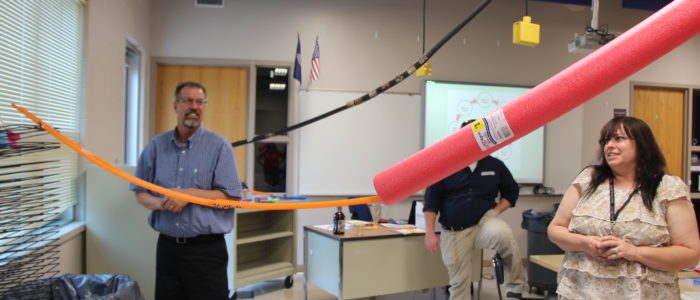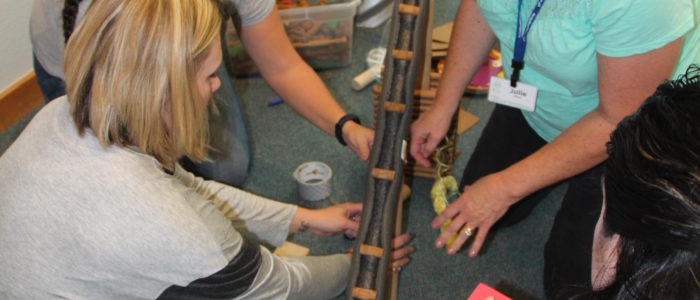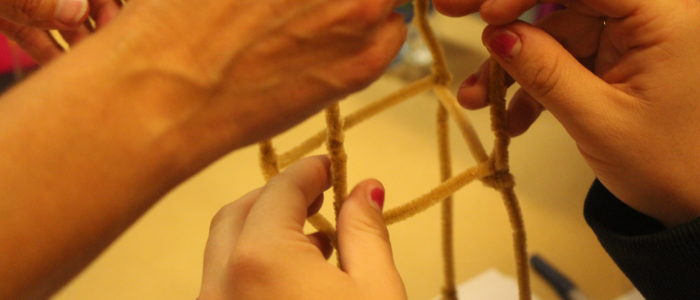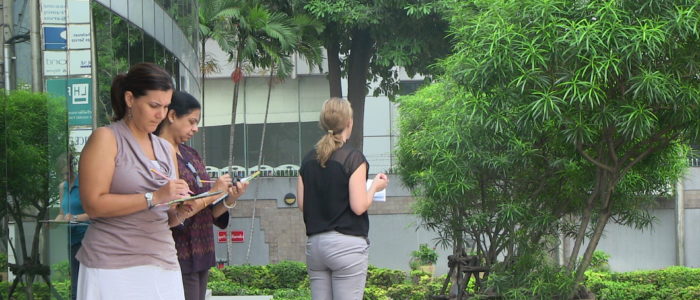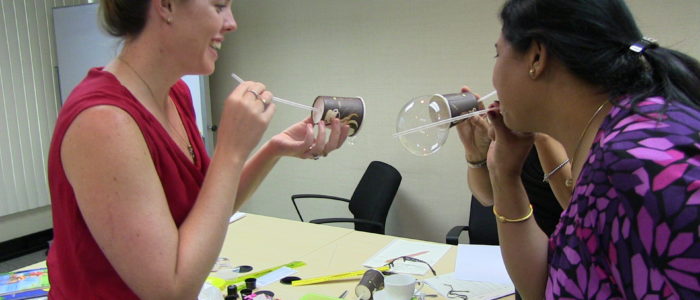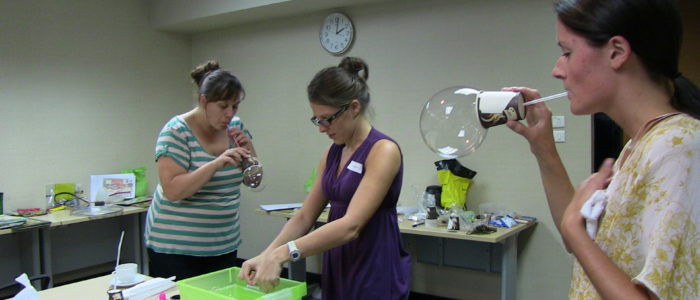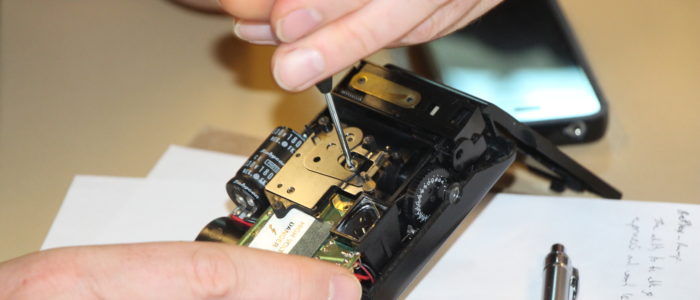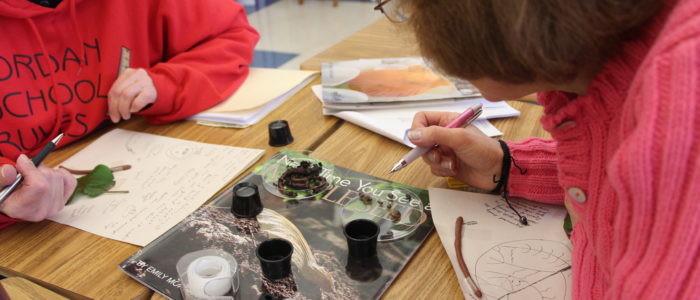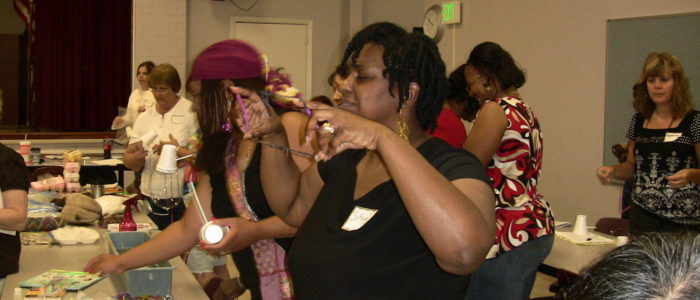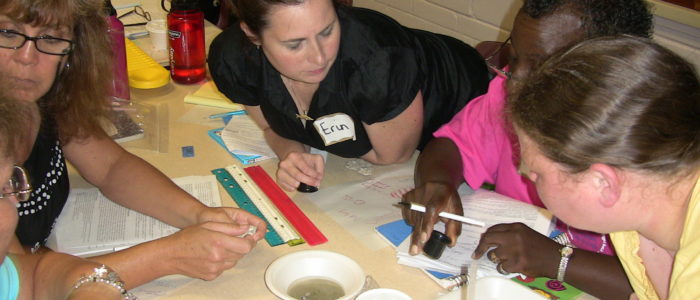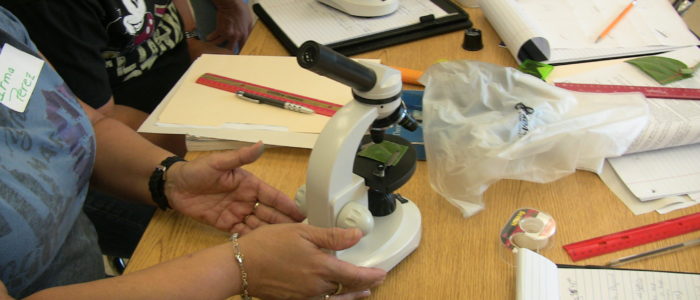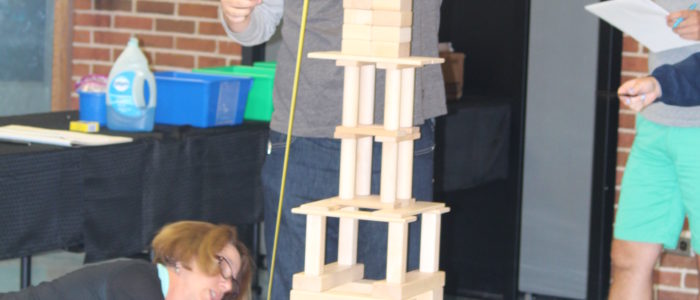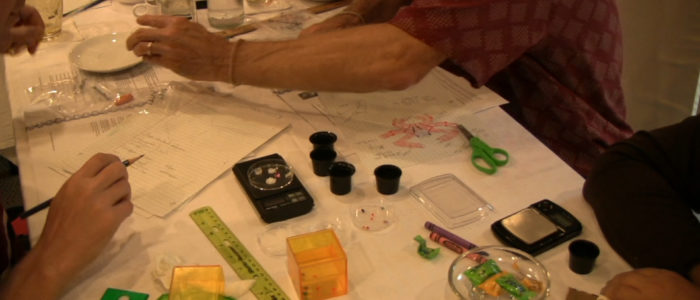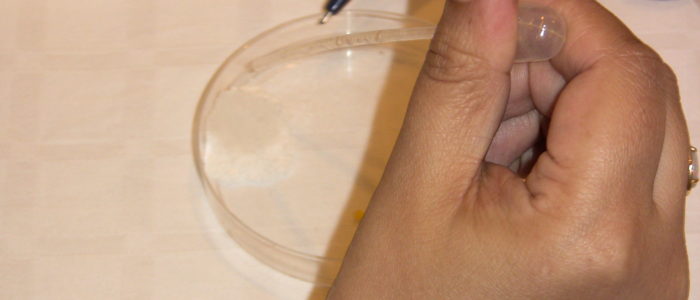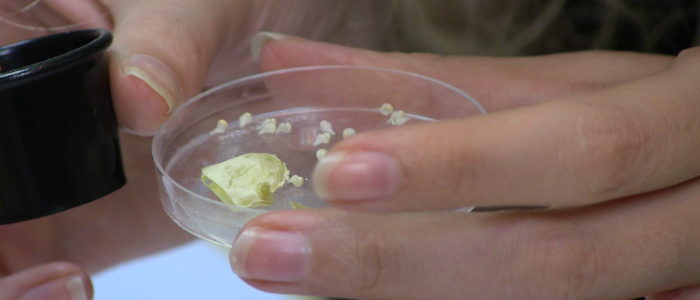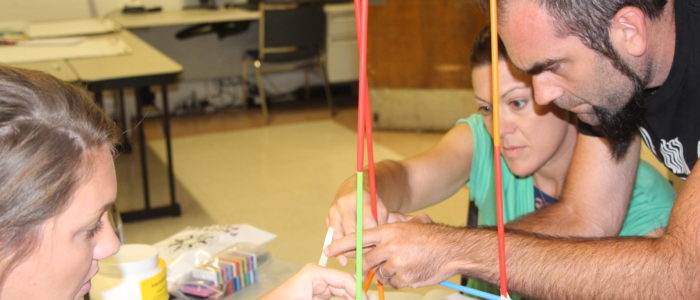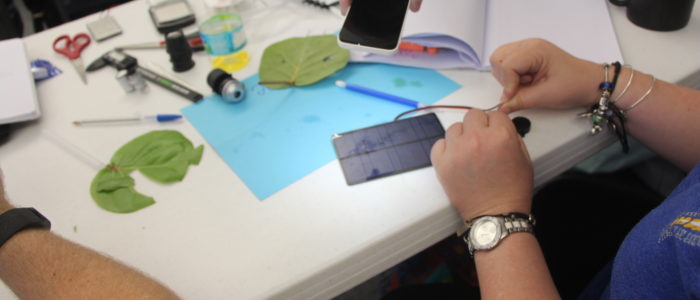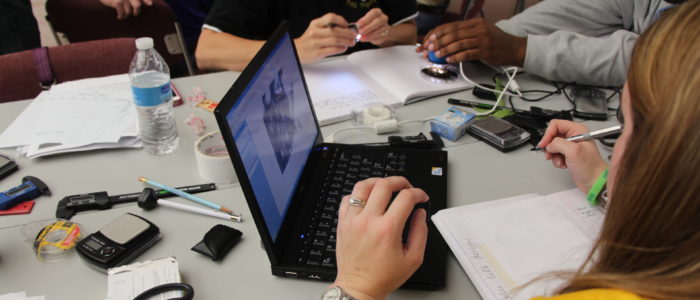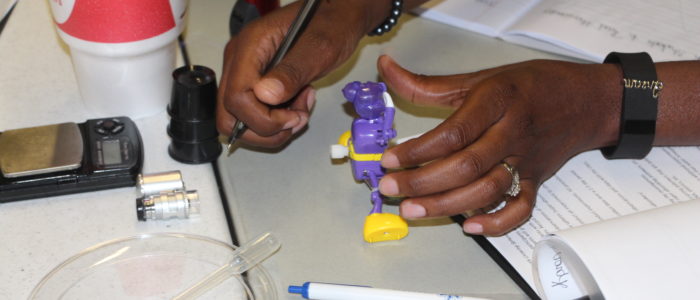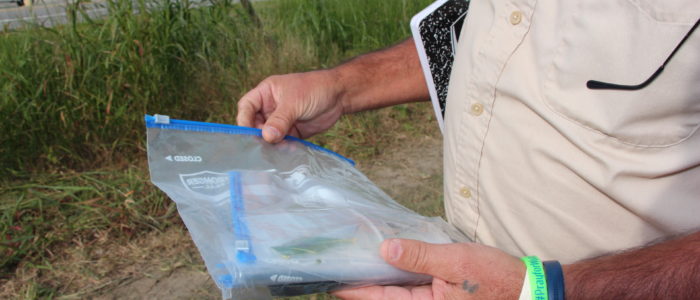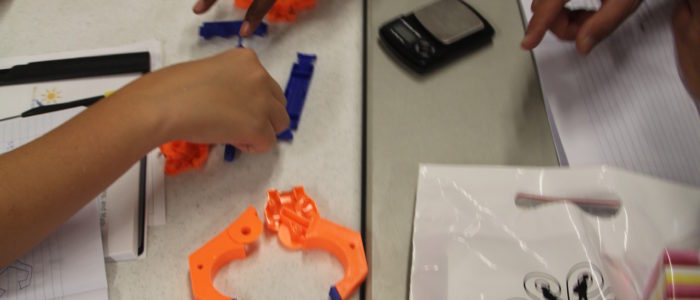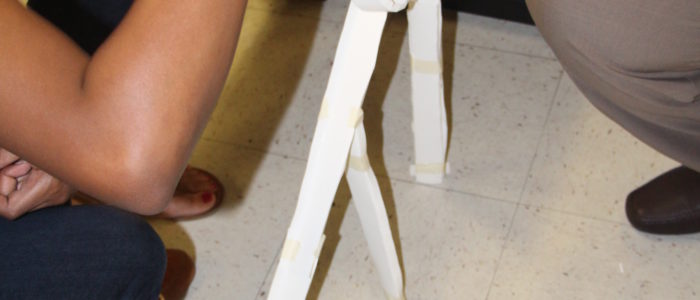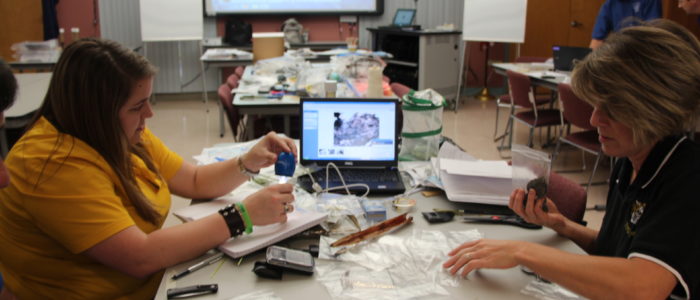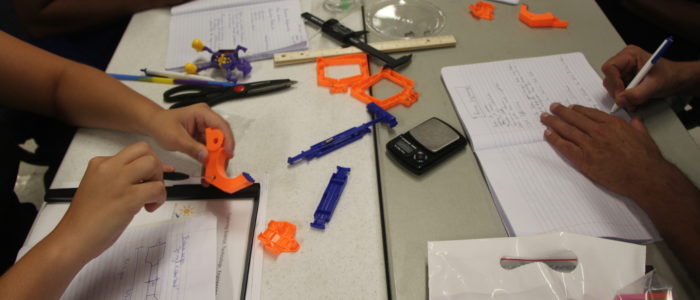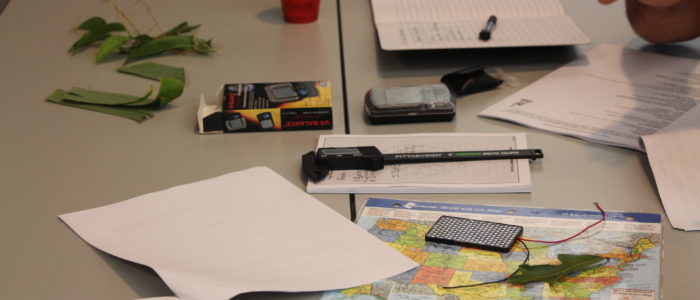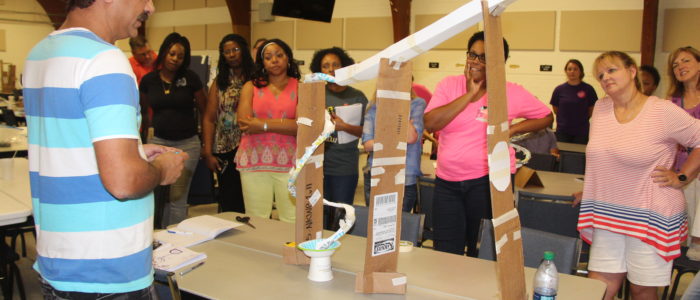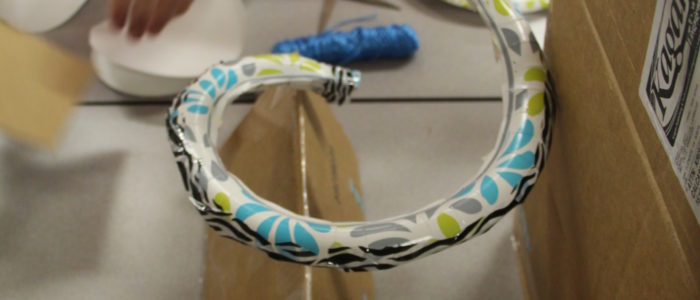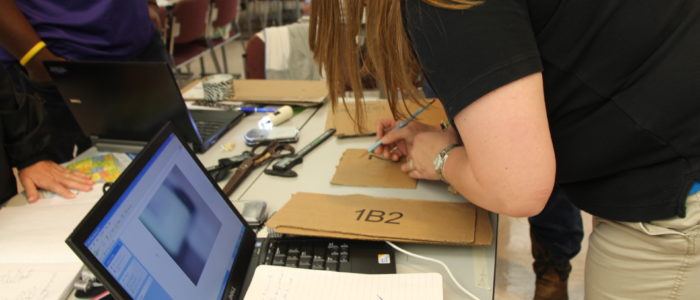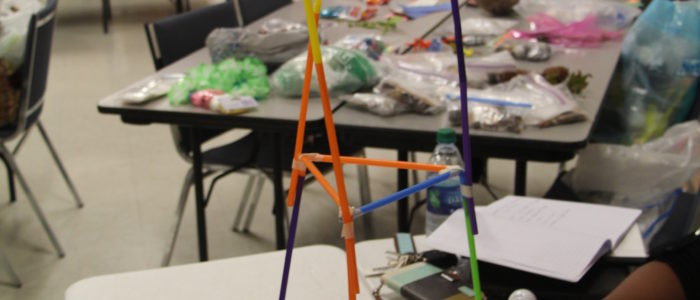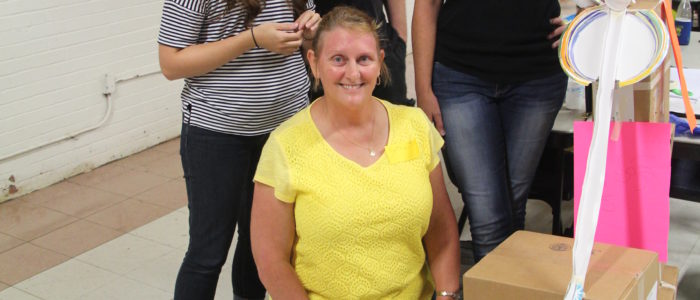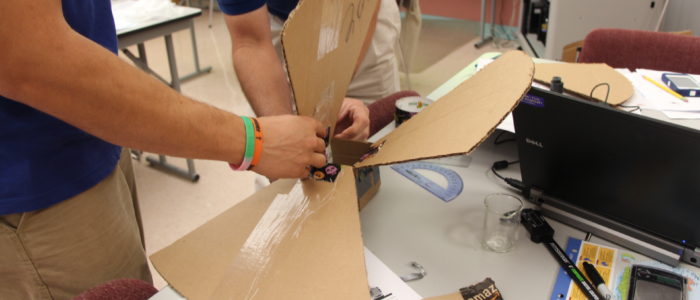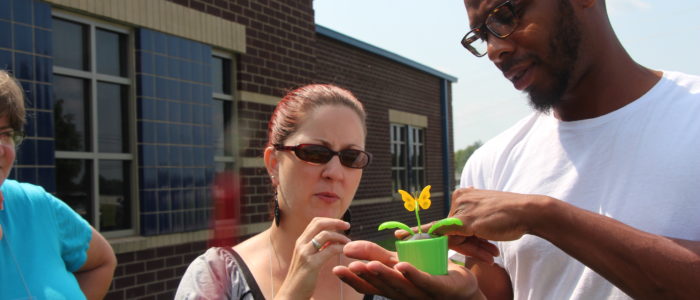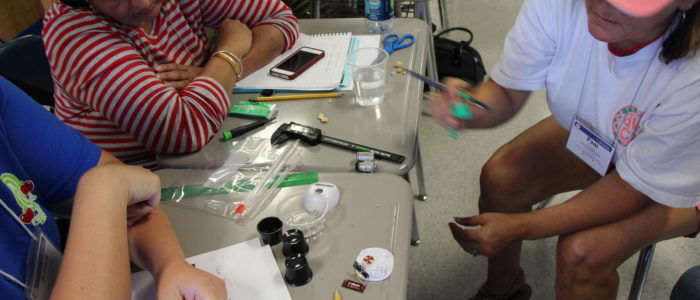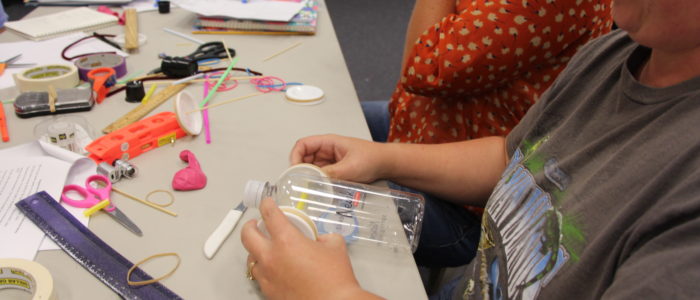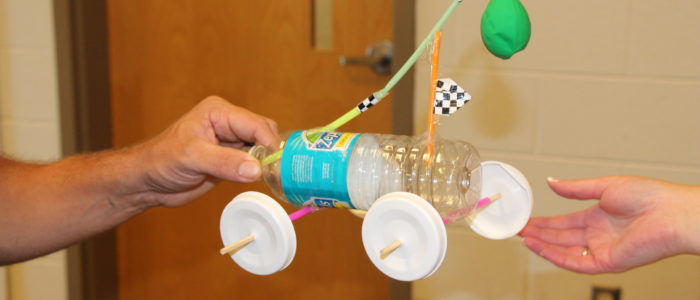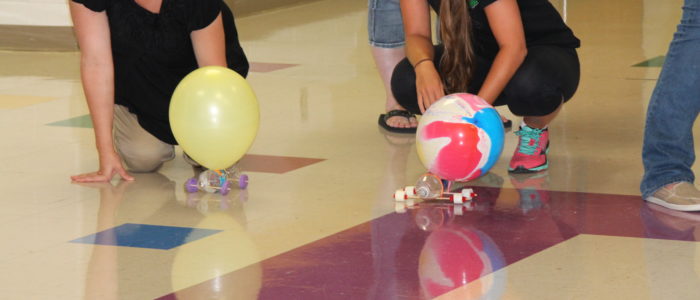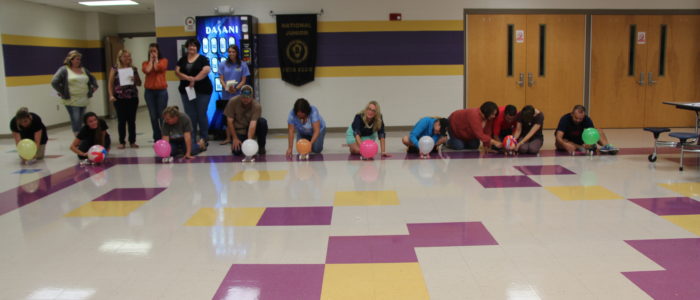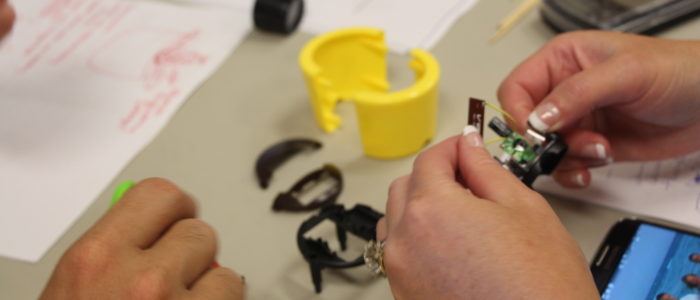Looking for ideas to incorporate STEM practices and content within your early childhood through the primary-level classroom. Check out the following photos of VPK and Kindergarten students conducting hands-on STEM investigations as they rotate through a dozen or so STEM-based exploration centers. Children were free to explore a dozen STEM exploration centers of their choice and spend as much or as little time as they chose. Children had the opportunity to build dimensional structures with recyclable materials, code with simple robotics, explore electronics with Snap Circuits and Circuit Conductors, build a model robot, explore unique states of matter, test out an earthquake table, build with bricks, build ramps with paper tubes and marbles, use levels and draw in the block center, tinker, take household gadgets apart and more. Each of the centers helped to develop and strengthen 21st-century learning skills as well. The following photos and video provide a wide-array of STEM-based exploration centers that are age-appropriate and manageable. The following photos and video are from a recent STEM-based program I conducted for a local school for VPK and Kindergarten students. [envira-gallery id=”1568″] [embedyt] https://www.youtube.com/watch?v=HvRLomlZstQ[/embedyt]
Teachers Explore the Principles of Biomimicry During STEM Teacher Training Workshop
One of my favorite teacher training workshops focuses on the concept of biomimicry. Biomimicry (from bios, meaning life, and mimesis, meaning to imitate)is a new science that studies nature’s best ideas and then imitates these designs and processes to solve human problems. Think of biomimicry as “innovation inspired by nature.” Nature has inspired scientists and engineers in developing camouflage clothing, adhesives, solar energy, filtration systems, transportation systems, drones and beyond. During the biomimicry-based teacher training workshops, teachers are introduced to the concept of biomimicry by studying a wide array of man-made gadgets and systems and discussing how scientists were inspired by nature in designing the gadget. During a recent STEM teacher training workshop, I conducted teachers were introduced to the principles of biomimicry. We ventured outside to observe “real-world” examples of biomimicry. Upon returning to the classroom teachers studied a wide array of examples of gadgets that were inspired by nature, teachers used an assortment of mathematical and scientific tools in their analyses including incorporating digital photography. Each group was asked to construct a mind map of their discussions of biomimicry as well. Teachers were then given the engineering challenge to look to nature in designing a prototype of a gadget that would help to solve a problem that humans face. Teachers incorporated the engineering design process as they brainstormed, designed and built prototypes of gadgets and structures that were based on inspiration from nature. Teachers built solar chargers, shelters, floatation devices, lighting systems, and more. When teachers introduce their students to biomimicry concepts, as well as giving the students an engineering design challenge based on the principles of biomimicry, this is truly an authentic and “real-world” STEM-based learning experience. For additional information on biomimicry check out the Biomimicry Institute website. The following photos were taken during the biomimicry/ STEM teacher training workshop. [envira-gallery id=”1526″]
Early Childhood Teachers Explore STEAM Practices and Content
Had a wonderful visit with Wonder Years Learning Center early childhood teachers in Totowa, NJ. During the six-hour training, teachers were introduced to principle foundations of science, technology, engineering, art, and math (STEAM) practices and content appropriate for toddlers through pre-Kindergarten-age. We started off the session by exploring patterns and shapes in nature and in man-made objects and how engineers and architects incorporate patterns and shapes in their building designs. Time was also spent out in the schoolyard to observe patterns and shapes of the school building and local neighborhood. Teachers made observations and drew in their journals. Teachers were also introduced to a wide-array of STEAM-based children’s literature that was aligned with each of the STEAM investigations that were undertaken throughout the training. Teachers were introduced to age-appropriate and low-cost technology that can be incorporated within the early childhood classroom on a daily basis. Many of these tools can be incorporated within the block center such as levels, rulers, tape measures, and journaling. Additionally, each of the STEAM-based investigations undertaken during incorporated 21st-century learning skills: critical thinking, creativity, communication, and collaboration. As always during my trainings, I like to introduce teachers to new STEAM-based products that are well-made and truly incorporate at least three of the STEAM disciplines. Teachers were introduced to Fisher-Price Think and Learn Code-a-Pillar Toy which introduces young children to coding skills on the very simplest level. Teachers had the opportunity to test out Start-Up Circuits which is a well-made toy to teach young children about electric circuits. Another well-made STEM-based toy the teachers were introduced to was Grippies Builders which is a soft grip magnetic building toy for toddlers. Participants were also introduced to a number of robot building kits including Educational Insights Design and Drill Robot, and Velcro Kids Robot Building Kit by Velcro Brand Blocks. At the close of the session, teachers were introduced to tinkering, where children are given opportunities to take-a-part broken toys and household gadgets. Tinkering is perhaps one of the most powerful STEM-based learning experiences and center for any age. As always it was inspiring to see such a motivated group of early childhood educators, as well as a supportive administrator who wanted to provide her staff with a quality and engaging introduction to incorporating STEAM practices and content within the classroom. I look forward to hearing how the Wonder Years Learning Center Staff will incorporate STEAM investigations and practices within their classrooms for the 2018-2019 school year. To get a “bird’s eye view” of the training, check out a sampling of the photos taken during the STEAM training for early childhood educators. [envira-gallery slug=”early-childhood-steam-teacher-training-workshop-wonder-years-learning-center”]
Science and STEM Exploration Centers to Inspire and Empower Young Children
The school supplies are flying off the shelves, it’s that time of year again when parents and teachers are getting ready for the start of a new school year. If you are an early childhood educator, you are perhaps the most influential individual in the eye of a young child. As you begin to plan for the upcoming school year think about what changes you may be able to make within your classroom and even teaching practices that will provide plenty of opportunities for the young child to explore, discover, and investigate. Learning experiences that will lead to the child being inspired and empowered. Take the time to find out what each child’s interests are, and provide learning experiences that will fuel their natural curiosity and interests. With the push to incorporate more science, STEM and technology within the early childhood classroom think deeply about what science and STEM experiences you will introduce the children to. When it comes to incorporating technology within the early childhood classroom think beyond the computers and Ipads, and tool a child places in their hand to make observations, and gather more data about the world around them is considered a form of technology. Thus, incorporating mathematical tools such as rulers, measuring tapes and levels are a great way to introduce the children to tools and technology. Providing simple hand lenses and microscopes, plastic pipettes and beakers, simple household tools and tool belts are ideal for science and STEM exploration centers. Science and STEM exploration centers should allow children to use as many of their senses as possible, incorporate journaling and drawing, as well as access to children’s literature. The following video provides snippets of hands-on-minds-on science and STEM exploration centers that provide opportunities for children to truly explore and discover and make sense of the world around them. The science and STEM exploration centers are highly engaging and the concepts being learned are meaningful to the child. These type exploration centers are sure to inspire and empower the young child. For more information about the science and STEM professional staff development and interactive keynotes Dr. Diana Wehrell-Grabowski conducts worldwide contact her via the contact page. [embedyt] https://www.youtube.com/watch?v=j2vzWty0Zi8[/embedyt]
Teachers Views on Professional Staff Development
Over 18 billion dollars in the United States alone is spent on professional staff development. Yet many teachers report that current professional staff development offerings are neither relevant nor effective. So, the Bill & Melinda Gates Foundation contracted with the Boston Consulting Group in 2014 to reach more than 1,300 teachers, professional development leaders, principals, professional development providers, and thought leaders through a series of surveys and interviews. Read the complete findings of the study here. Professional staff development that is designed and delivered to meet the needs of the specific target audience will have long lasting positive impacts on those teachers in attendance, and the students they reach. Check out the following video with snippets from professional staff development sessions that Education Consultant, Diana Wehrell-Grabowski, PhD has conducted. Teachers attending the professional staff development sessions are engaged, empowered and inspired. When these factors come together this leads to positive learning experiences and transformations. [embedyt] https://www.youtube.com/watch?v=8vAcLXmPRw0[/embedyt]
The State of STEM Report, May 2018
For the latest findings on STEM education and workforce in the United States check out The State of STEM Report: A Comprehensive View of the STEM Ecosystem, with Recommendations for Where Collaborations Should Focus Future Investments at STEM Connector.
Project-Based Learning in the Early Years
Project-based learning involves teaching through engaging topics that allow the integration of meaningful learning in all content areas while also supporting development across multiple domains. A project approach has been defined by Katz and Chard (1989) as an in-depth study of a topic by either an individual child, group of children or an entire class. Students and teachers together will determine the topic that they will investigate, resources they will use, and the manner in which their learning will be displayed. The project approach is of immense benefit to children because it encourages them to actively seek knowledge. This might entail them to interact with people in the community, environment and seek out other resources. This will encourage the children’s ability to be independent, be motivated and increase their self-esteem. The project approach has immense benefits to teachers too in terms of them pointing the children in the right direction to explore and freeing the teachers to provide more individualized instruction. The project approach also challenges teachers because each group of children will have different ideas and suggestions for the project. Katz and Chard (1989) have identified three phases in the life of a project. The first phase is the initial phase during which the teacher assesses the knowledge level of the children in the particular area, then the children and the teacher develop the questions that they would like to investigate. During the developmental phase the teacher guides the children to gain direct experience in the topic that they are investigating. During the concluding phase the teacher brings a closure to the project and the children share the knowledge they have gained through several creative methods. Whether project-based learning is being incorporated within an early childhood classroom or in a high school classroom, the definition of a project remains the same, “a project is an in-depth investigation of a real-world topic worthy of a student’s attention and effort.” I recently had the pleasure of introducing early childhood through Kindergarten teachers to project based learning during a professional staff development training. Teachers were given a brief overview of project-based learning and the positive outcomes of incorporating project-based learning in the early childhood classroom. I had chosen “Studying the Human Skeleton” as the theme to introduce teachers to project-based learning. During the training teachers were introduced to a wide-array of exploratory centers that could be incorporated within the classroom to investigate the human skeleton in-depth, additionally connections were made across the disciplines to include: art, engineering, physical education, math, reading and writing. The teachers really enjoyed the session, and it was evident by the end of the training session they had truly embraced project-based learning. The administrator of the school requested that each of the teachers submit a reflection piece after the training to summarize the training. They were also requested to incorporate a lesson from the training within their own classrooms. Teachers submitted written reflections as well as photos of the lessons. The teachers stated over and over again “how excited and engaged the students were” when they were engaged in in-depth explorations of the human skeleton. Teachers also stated “that they would re-design” existing lesson plans to be more project-based. The following photos were taken during the introductory Project-Based in the Early Years professional staff development training. For more information about scheduling professional staff development complete the Contact Form on the Contact Page.
Harbor Freight Tools Awards $1 Million in Prizes for Skilled Trade Teachers and High Schools
Kudos to Harbor Freight for the second year to award $1 million in prizes for outstanding skilled trades teachers and high schools. Check out the details for the Harbor Freight Tools for Schools here.
Families Explore Tinkering and Upcycling Toys and Gadgets During Hands-On Workshop
Tinkering is probably one of the most powerful hands-on-minds-on experiences a teacher or parent can provide a child with. As a child takes apart a broken toy or gadget they have the opportunity to truly be engineers. Tinkering develops and strengthens 21st century skills, and introduces the child to the engineering design process and reverse engineering. Through the process of deconstructing a broken or obsolete gadget children see how the many engineering disciplines are used in creating just one gadget. It may also provide the fuel to spark their interest to pursue a career in the STEM fields. I recently had the pleasure of sharing my knowledge and passion of tinkering and re-creating with a group of families during a recent workshop I conducted for the Cocoa Beach Public Library. The workshop was entitled “Deconstruct and Re-Create”, the workshop was held in conjunction with Earth Day to bring awareness to recycling and upcycling. Families were asked to bring a broken or obsolete gadget, safety goggles and the necessary tools required to deconstruct the gadget. Participants were introduced to upcycling, reverse engineering and the engineering design process through an introductory engaging discussion and PowerPoint presentation by Diana Wehrell-Grabowski, PhD. Families were instructed to discuss their gadget prior to deconstructing. Parents guided their children as they deconstructed the gadgets, and children took notes throughout the process. If time permitted, families were encouraged to create a new gadget or art from the deconstructed components. At the close of the session families shared what they had learned during the deconstruction process, and their newly created gadget, art or structure as well. Families received a manual with information on the Maker Culture, STEM Education, and inquiry-based instructions to deconstruct gadgets, as well as children’s literature resources for tinkering, making and STEM. It was a great session, and sustainable as well. Several of the families approached me at the close of the session and stated that they would no longer throw broken items away without having their child deconstruct the gadgets first, and attempting to upcycle internal and external components for future maker and STEM projects. The following video provides snippets of the two hour family tinkering session. For more information on the Maker Ed and STEM workshops and professional staff development Dr. Diana Wehrell-Grabowski offers to libraries and schools worldwide contact her via the contact page. [embedyt] https://www.youtube.com/watch?v=LR35JAvsqYc[/embedyt]
Teaching STEM Through Children’s Literature Training for 21st CCLC Staff
I had the pleasure of presenting at the 2018 Promising Practices- Proven Strategies Extra Learning Opportunities Conference in Harrisburg, Pennsylvania. The conference was open to schools with established 21st Century Community Learning Centers (21st CCLC). I conducted a session entitled “Teaching STEM Through Children’s Literature“, the session was designed for afterschool staff working with 3rd-5th graders. During the three-hour workshop participants were introduced to approximately sixty plus STEM-themed children’s titles that are ideal for incorporating within STEM lessons. Titles included many from the NSTA list of Outstanding STEM Trade Books for 2017-2018. Participants conducted numerous hands-on-minds-on, inquiry-based STEM investigations during the training from materials science, to reverse engineering, engineering journaling, and exploring electricity-based kits and more.. Throughout the nation afterschool programs are continuing to incorporate more STEM experiences for the students within their programs. From conducting building engineering challenges to robotics STEM is making its way into afterschool programs. For more information about the conference check out the following link. The following photos were taken during the hands-on-minds-on, inquiry-based workshop. For more information about scheduling STEM professional staff development for 21st CCLC Staff and K-12 teachers complete the Contact Form on Contact Page.
